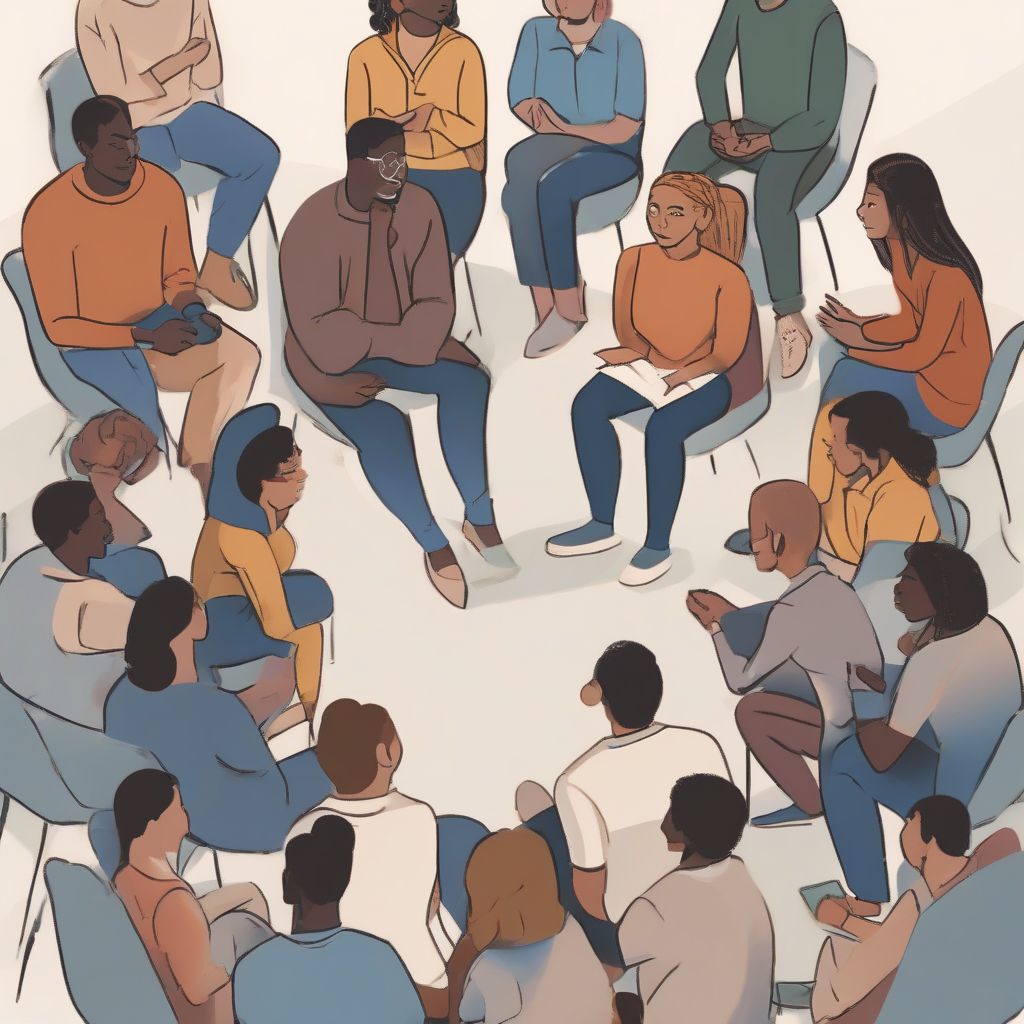Have you ever felt like your conversations were missing something? Like you were talking at each other instead of truly connecting? This is where mindful communication comes in. It’s about being present, engaged, and genuinely interested in understanding the other person.
As a nutritionist and meal prepping coach, I constantly see the impact communication has on our health journeys. It’s not just about the food we eat, but also how we communicate our needs, listen to our bodies, and build supportive relationships around us.
This article will explore practical ways to cultivate trust and openness in your communication, leading to more authentic and meaningful connections.
Understanding Mindful Communication
Mindful communication goes beyond simply choosing the “right” words. It’s about cultivating a presence of mind that allows for deeper understanding and connection.
Here’s what it entails:
- Being Present: Put aside distractions and give the speaker your full attention. Notice their body language and tone of voice.
- Listening Deeply: Go beyond just hearing the words. Try to understand the emotions and underlying message behind what’s being said.
- Speaking Authentically: Share your thoughts and feelings openly and honestly, while remaining respectful of the other person.
- Cultivating Empathy: Step into the other person’s shoes. Try to see the situation from their perspective, even if you don’t agree with them.
Building Blocks of Trust and Openness
Trust and openness are the cornerstones of any strong relationship. Here’s how to foster them through mindful communication:
1. Active Listening: The Foundation of Trust
Active listening involves fully concentrating on what the other person is saying, both verbally and nonverbally.
- Pay attention to nonverbal cues: Notice their body language, facial expressions, and tone of voice. These can provide valuable insights into their true feelings.
- Reflect and clarify: Repeat back what you’ve heard to ensure you understand. Ask clarifying questions like, “What I hear you saying is…” or “Can you tell me more about…?”.
- Validate their feelings: Let them know that their feelings are valid, even if you don’t agree with their perspective. You can say things like, “That sounds really frustrating” or “I can understand why you’d feel that way.”
 Active Listening
Active Listening
2. Cultivating Empathy: Stepping into Their Shoes
Empathy is the ability to understand and share the feelings of another. It’s about putting yourself in their position and seeing the world through their eyes.
- Practice perspective-taking: Ask yourself, “If I were in their situation, how would I feel?” This can help you to be more understanding and compassionate.
- Acknowledge their emotions: Let them know you see and hear their feelings, even if you wouldn’t react the same way.
- Avoid judgment: Everyone experiences things differently. Refrain from judging their reactions or offering unsolicited advice.
3. Expressing Yourself Authentically: Speaking Your Truth
Open communication requires honesty, both with yourself and the other person.
- Be clear and direct: Express your thoughts and feelings clearly and directly, using “I” statements to avoid blaming or accusing. For example, instead of saying, “You never listen,” try “I feel unheard when…”
- Be vulnerable: Sharing your own vulnerabilities can foster connection and encourage others to do the same. It’s about creating a safe space for genuine sharing.
- Be respectful: Even when disagreeing, choose your words carefully and avoid personal attacks. Focus on the issue at hand rather than attacking the person.
4. Nonviolent Communication: A Framework for Compassion
Nonviolent communication (NVC) is a powerful tool for communicating in a way that promotes empathy and understanding.
- Observe without judgment: State the facts of the situation without adding your own opinions or interpretations.
- Identify your feelings: Connect with the emotions you’re experiencing in relation to the situation.
- State your needs: Clearly articulate what you need in order to feel heard and understood.
- Make a request: Ask for what you need in a clear and specific way, leaving room for the other person to respond.
Overcoming Communication Barriers
Even with the best intentions, communication barriers can arise. Here are some common obstacles and how to navigate them:
- Assumptions: Avoid making assumptions about what the other person is thinking or feeling. Instead, ask questions to clarify their perspective.
- Defensiveness: When we feel attacked, our natural instinct is to defend ourselves. Instead, try to pause and listen to understand the other person’s perspective before responding.
- Lack of Emotional Intelligence: Building emotional intelligence – the ability to understand and manage emotions – is crucial for mindful communication.
- Past Experiences: Past hurts and betrayals can make it challenging to trust and be open. Acknowledging these experiences and seeking professional support if needed can be beneficial.
The Rewards of Mindful Communication
Mastering mindful communication isn’t a destination but an ongoing journey. The rewards, however, are well worth the effort:
- Stronger Relationships: Mindful communication builds trust, intimacy, and connection in personal and professional relationships.
- Improved Conflict Resolution: By fostering empathy and understanding, mindful communication helps to resolve conflicts more constructively.
- Enhanced Emotional Well-being: Open and honest communication allows us to process our emotions healthily and build resilience.
- Increased Self-Awareness: By paying attention to our own thoughts and feelings during communication, we develop a deeper understanding of ourselves.
Conclusion: Cultivating Meaningful Connections
Just as we nourish our bodies with wholesome food, we need to nourish our relationships with mindful communication. It’s about creating a space where we feel safe to be vulnerable, to listen deeply, and to speak our truth authentically. This process of mindful connection, though requiring effort, ultimately leads to more fulfilling relationships and a greater sense of well-being.
Take some time to reflect on your own communication patterns. What are your strengths? What areas could you improve? By committing to the principles of mindful communication, you can foster deeper connections, resolve conflicts more effectively, and cultivate more meaningful relationships in all areas of your life.
What steps will you take today to communicate more mindfully? Share your thoughts in the comments below!
[amazon bestseller=”mindful communication”]
